Explore the profound traditions of Laos funeral rituals, deeply rooted in Theravada Buddhism and Laotian cultural heritage. From ritual cleansing to vibrant cremation ceremonies, this Laos travel guide for 2025 unveils the spiritual and communal practices that honor the departed in this serene Southeast Asian nation.
In Laos, a land where spirituality and community intertwine, Laos funeral rituals are a poignant reflection of the nation’s Theravada Buddhist beliefs and cultural heritage. Known as the Laos dead ceremony, these rituals blend solemn reverence with communal support, guiding the deceased to their next life while strengthening bonds among the living. With 66% of Laotians practicing Theravada Buddhism, as noted by cultural sources, these ceremonies emphasize reincarnation, impermanence, and merit-making to ensure the departed’s peaceful transition. From the ritual bathing of the body to the vibrant cremation processions, Laotian Buddhist funerals are both a farewell and a celebration of life’s cycle. For travelers and cultural enthusiasts going on tours to Vietnam Cambodia & Laos in 2025, understanding these Laos funeral traditions offers a deep connection to the nation’s soul. Here’s everything you need to know about the Laos dead ceremony and its sacred practices.
Ritual Preparation – Cleansing in Laos Funeral Traditions
The Laos funeral rituals begin with intimate preparations that honor the deceased and prepare their spirit for the next life. When someone passes, family members encourage the dying to recite Buddhist scriptures or repeat the Buddha’s name to focus their mind on enlightenment. If the individual is too weak, loved ones whisper these sacred words in their ear, a practice rooted in Theravada Buddhist beliefs in reincarnation. After death, the body undergoes a ritual bathing ceremony, where family and close friends pour blessed water—infused with perfume and flowers—over the deceased’s hands to cleanse them of worldly sins.
The body is then dressed in fine clothing, adorned with jewelry, and sometimes has coins placed in the mouth to symbolize offerings for the afterlife. A white string is tied around the neck, arms, and legs to bind the spirit, preventing it from lingering. The body is placed in a coffin, which remains in the family home, known as the Heuanedi, for one to three days—sometimes up to a week for distant relatives to attend. During this wake, mourners offer condolences, bringing money, flowers, or wreaths, which help defray funeral costs and support merit-making for the deceased.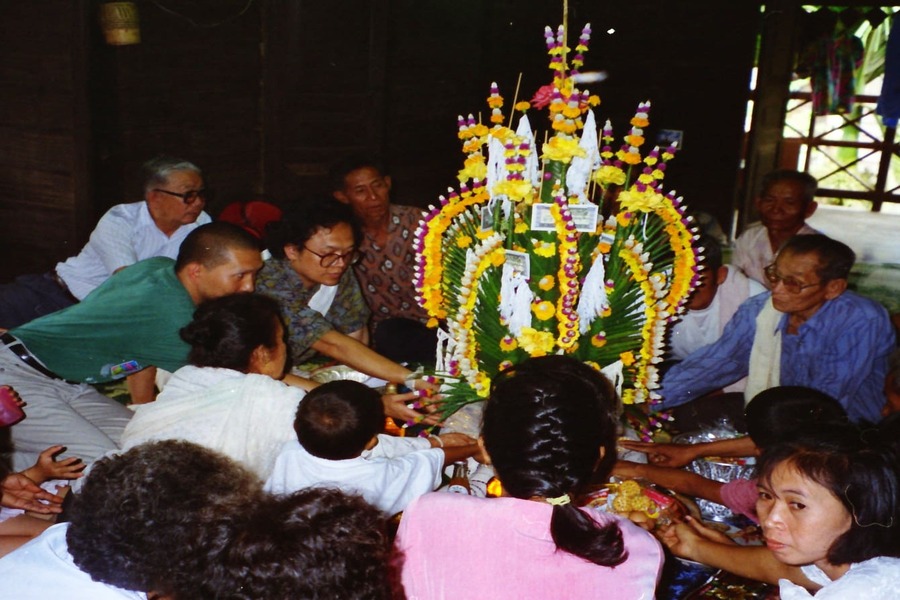
Travel Tip: If attending a Laos dead ceremony, dress conservatively in black or white (avoid bright colors like red) and bring a small monetary offering or wreath to show respect, as is customary in Laotian funeral customs.
Heuanedi Wake – Community Support in Laos Funeral Rituals
The Heuanedi, or funeral wake, is a cornerstone of Laos funeral traditions, fostering community solidarity and spiritual support. Held at the deceased’s home, the wake lasts one to three days, during which villagers, friends, and family gather to pay respects. The coffin, flanked by a large photo of the deceased and floral wreaths, becomes a focal point for prayers and offerings. Guests often stay overnight, engaging in quiet activities like card games or watching videos to keep the family company, though loud music, singing, or dancing is avoided to maintain solemnity.
Food is served to mourners, but strict customs govern its preparation. No animals are killed for meals during the funeral period, and noodle dishes are avoided, as their string-like shape is believed to tie the deceased’s spirit to the earthly realm, hindering their journey to rebirth. Guests wash their hands with blessed water before leaving the Heuanedi to purify themselves, a ritual that protects against spiritual pollution. Monks visit each evening to chant sutras, preparing the mourners’ minds for meditation and the deceased’s transition.
Travel Tip: Visitors to Laos can respectfully observe Laotian Buddhist funeral wakes in rural villages, such as those near Luang Prabang. Ask permission before photographing, as these are sacred events, and avoid bringing food to the Heuanedi.
Funeral Procession – A Sacred Journey in Laos Death Ceremony
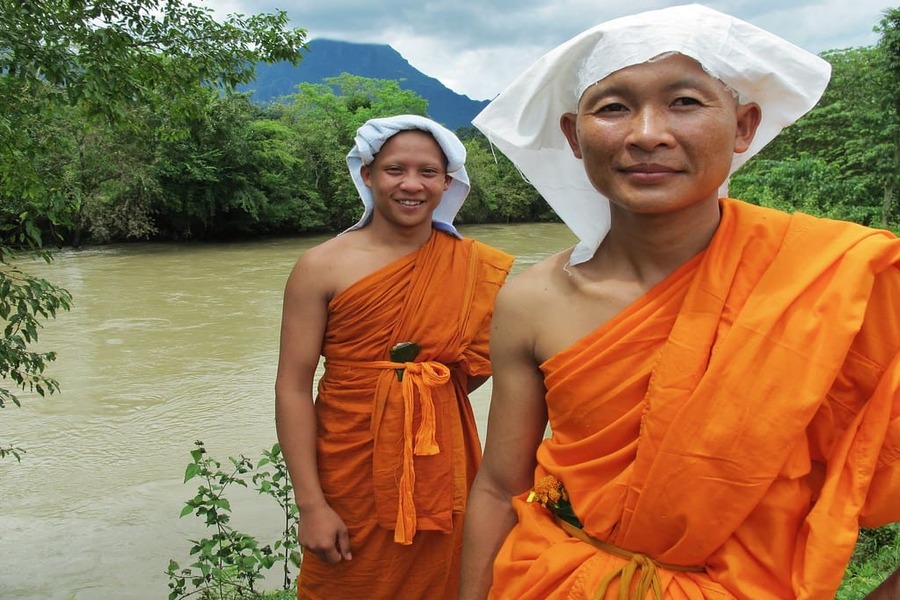
The Laos dead ceremony culminates in a vibrant funeral procession that guides the deceased to the cremation site, typically at a temple. Led by Buddhist monks chanting sutras, the procession includes white-robed nuns holding a ceremonial white cloth, symbolizing purity. Male relatives close to the deceased often shave their heads and eyebrows, donning monks’ robes as “monks for the day” to honor the departed, while female relatives may serve as Mae Khao (White Ladies), fasting and wearing all-white garments without makeup or jewelry.
The coffin, covered by a funeral tower called the mam, is carried by a hearse or funeral car, followed by family and friends. The procession takes an indirect route to confuse malevolent spirits, ensuring the deceased’s soul moves freely to the afterlife. Upon reaching the cremation site, monks and family circle the pyre several times, dripping fresh coconut juice into the coffin as a final cleansing act. The mam is dismantled, and the ceremonial cloth is tied to its corner, placed before female family members and nuns seated nearby.
Travel Tip: If visiting Vientiane or Luang Prabang, you may witness a Laos cremation ceremony at local temples like Wat Si Saket. Maintain a respectful distance and avoid looking back during the procession to honor the superstition that it could trap the spirit.
Cremation Ceremony – Honoring Rebirth in Laos Funeral Rituals

Cremation is the most common practice in Laotian Buddhist funerals, reflecting Theravada Buddhist beliefs in reincarnation and the impermanence of the physical body. The coffin is placed on a pyre stacked with firewood to ensure complete burning. A photograph of the deceased, surrounded by flowers and candles, is displayed on the mam. Monks lead a chanting session, followed by offerings of candles and flowers from mourners. Female family members light the pyre, marking the final farewell, while children may receive candies thrown to symbolize joy amid loss.
Pregnant women are not permitted to attend the cremation, as it’s believed the deceased’s spirit could reincarnate into the unborn child. After the pyre burns, monks collect the ashes and bones, which are washed and placed in an urn. The ashes are often scattered in the Mekong River, a sacred act symbolizing the soul’s release, while bones may be interred in a stupa. The cremation site is purified with blessed water, and mourners wash their hands before returning home.
Travel Tip: For a deeper understanding of Laos cremation ceremonies, visit temples in Savannakhet, where ashes are often scattered in the Mekong. Respect the solemnity by avoiding loud behavior and wearing conservative clothing.
Memorial Services – Ongoing Merit in Laos Funeral Traditions
Laos funeral rituals extend beyond the cremation, with memorial services that accumulate positive karma for the deceased. The Cherkhao, held one to three days after cremation (or sooner in Western contexts), involves monks chanting and families offering food and gifts to transfer merit to the departed. The Boun 100 Vanh, a significant memorial held 100 days after death, includes tributes to the Triple Jewel (Buddha, Dharma, Sangha) and almsgiving, reinforcing community bonds. A final memorial on the first anniversary marks the end of formal mourning.
These services, often held at the Heuaneboun (former Heuanedi), emphasize the Buddhist principle of impermanence and the cycle of rebirth. The Tak Bat ritual, where monks receive alms, is common post-funeral, thanking them for their role in the Laos dead ceremony. These practices ensure the deceased’s spirit is supported in its journey toward enlightenment or nirvana.
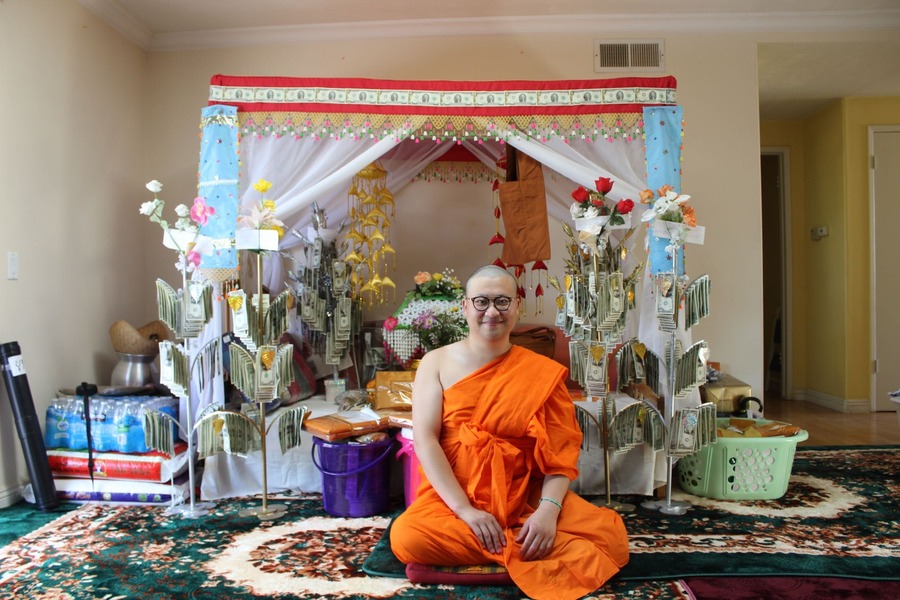
Travel Tip: Experience the Tak Bat ritual in Luang Prabang, especially during memorial services, by offering alms respectfully. Join guided cultural tours to learn about Laos memorial services from local experts, ensuring proper etiquette.
Cultural Significance and Etiquette – Respecting Laos Funeral Rituals
Laos funeral traditions are deeply tied to Theravada Buddhism and animist beliefs, with practices like avoiding noodles or sweeping the house reflecting superstitions about guiding the spirit to the afterlife. The Lao believe in 32 khwan (spirits) within the body, and rituals like tying white strings or the baci ceremony ensure these spirits are at peace. Animist influences, such as fear of phi (malevolent spirits), shape customs like not looking back during processions to avoid trapping the deceased’s soul.
For travelers, respecting Laos funeral rituals is essential. Wear black or white clothing, avoid bright colors, and refrain from taking food from the Heuanedi. Offerings like money, flowers, or wreaths are appreciated, but avoid speaking ill of the deceased, as it’s considered bad luck. Photography is sensitive; always ask permission, especially during the Laos cremation ceremony. Washing hands with blessed water before leaving the funeral site is a must to maintain spiritual purity.
Travel Tip: If invited to a Laotian Buddhist funeral in rural areas like Ban Xang Khong, observe quietly and follow local guidance on etiquette. Visit cultural centers like TAEC in Luang Prabang to learn more about Laos spiritual practices before attending.
Experiencing Laos Funeral Rituals as a Traveler
Laos funeral rituals offer a profound glimpse into the nation’s spiritual and communal life, blending Buddhist principles with cultural traditions. From the solemn Heuanedi wake to the vibrant Laos cremation ceremony, these practices honor the deceased while reinforcing community ties. For travelers, witnessing these rituals in cities like Vientiane or rural villages near Savannakhet provides a deep cultural experience, especially when combined with festivals like Boun Ok Phansa, where merit-making is prominent.
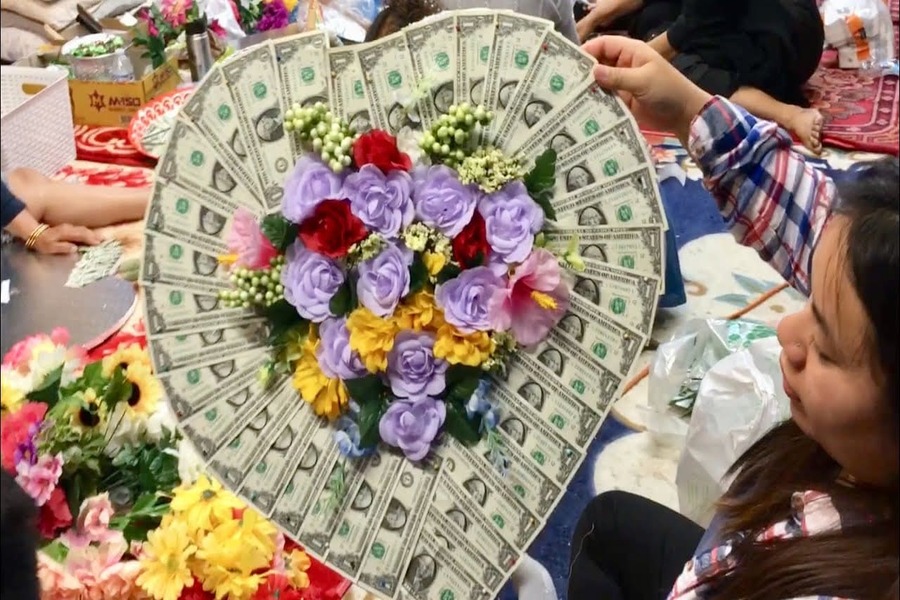
To engage respectfully, visit temples like Wat Xieng Thong during Tak Bat or join cultural tours that explain Laos memorial services. The Lao Handicraft Association notes that these rituals are accessible to visitors who approach with humility, offering a chance to connect with Laos cultural heritage. Costs are minimal—wreaths or monetary offerings range from $5–20, and temple visits are often free or require small donations (5,000–20,000 kip).
Pro Tip: Plan your visit during the dry season (November–April) for easier travel to rural areas where Laotian funeral customs are most authentic. Combine your cultural exploration with visits to natural wonders like Kuang Si Waterfall for a complete Laos travel guide 2025 experience.
By understanding and respecting Laos funeral rituals, you’ll gain a deeper appreciation for this enchanting land, where death is a sacred milestone in the cycle of life.

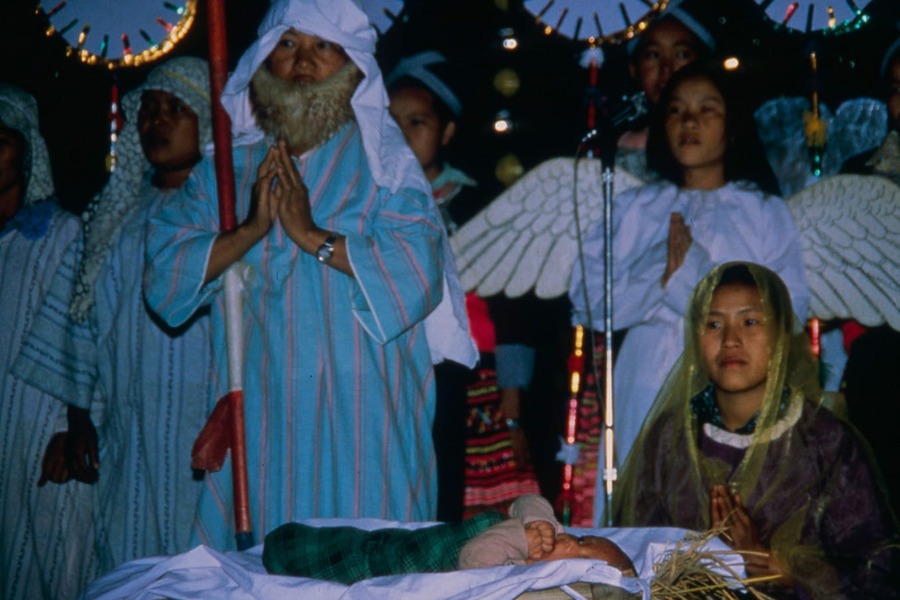
0 Comment